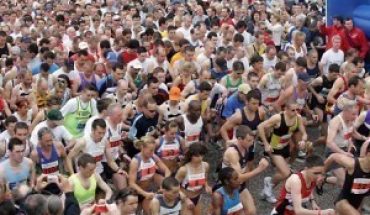It may seem like terrific fun and require lots of energy. Yet, learning how to cheerlead requires a few other talents in order to make this energetic art the natural sport it truly is. Some of these talents include a modest amount of good timing. Good timing helps to maintain safety as well as enhance inherent choreography engaged in cheerleading. Clearly, enthusiasm ranks in the top three requirements in order to properly execute each cheer. A clear, articulate voice is also necessary as well as the ability to project vocal sounds loudly enough to be heard in the last row of the bleachers. Also in the top three requirements in addition to good timing and solid vocal skills is a sense of working precision with team members crucial to the final result of each cheer.
Additional skills such as being able to perform various types of floor gymnastics, i.e., front and back walkovers, aerials such as front and back summersaults, layouts, tucks and contortion-type acrobatics like side and straddle splits, backbends, butterflies, as well as less difficult tumbling rolls. Training for these is a matter of the proper amount of practice and the body’s ability to adapt well to increasing limbering exercises that enhance the flexibility of muscles in the legs, back and arms. There are also dance movements that may also be incorporated into many cheerleading routines. Pivots, half and full turns as well as leaps are among a few of these dance movements.
It’s important to avoid performing cheerleading routines that appear mechanical. Fluidity of movement makes cheerleading appear more polished and the result is a perfected cheer that is effective and interesting. In most cheerleading routines today, various effects are added to enhance the theatrical look of the cheer when performed before audiences at half times and in competitions. In competition, however, the difficulty lies with achieving the scores by the cheerleading teams for the best precision work as a team and the most creative cheer and cheering choreography.
Cheerleading practices generally begin with teaching line by line cheers that usually are of at least a 3-5 minutes duration. The sponsoring competition group may set the amount of time a cheer can be performed. Usually, each cheerleading group has a captain and co-captain. This is most often found in high school and college cheering teams. The group cheerleading exhibition may also include tosses and lifts as well as pyramids.
Learn the cheer so that the words are distinct and clearly audible. Next, concentrate on the corresponding movements that are part of the cheer. For home practice, it’s a good idea to use a full length mirror to gauge movement and overall appearance. One good tip for new cheerleaders is to use a metronome such as the type that pianists often use to help practice rhythm of the cheer. Rhythm is where the cheerleading focus lies. It’s also the mechanism that maintains accurate precision of team movements.
When learning a new cheer, the metronome can help the beginner adapt each step of the cheer to hand movements and projection of the voice. Try to pick out the tempo of each cheer. This simply means that a cheer can be slower or faster as dictated by the verbiage of the cheer itself. As an example, the words of a cheer might be: “Red, black, fight, fight. Red, black, fight, fight. Who fight? We fight. Red, black, fight, fight.” This cheer has a basic 1-2-3-4 rhythm and takes on a moderate tempo. In contrast to a cheer such as: “Hail, To Our Victors Valiant, Hail To Our Conquering Heroes, Hail, Hail, Our School Team Cry, Victory Is Ours”. This has a 1-pause, 1,2,3,4 rhythm and the tempo is performed in a dance-style format.
The choreography of cheerleading routines are often deeply embedded in geometric patterns. Squads of cheerleaders may perform in triangles, quadrangles and rectangles and their precision movements can be equally geometric in performance. The squad may break in half to create two distinct moving bodies of cheerleaders or they may interweave their movements so that action is constant and full of energy. Projecting natural energy whether on the sidelines of sports activities or in competition is a priority.





